It is no secret that engine performance and efficiency are tied to the accurate operation of sensors, like fuel rail pressure sensors. Developing an understanding of major engine components is essential in ensuring your vehicle runs at its peak performance, and learning how to test a fuel rail pressure sensor with a multimeter may be the most important skill you can possess. In this post, we’ll explain how to use tools like a multimeter to check for consistent readings from the sensor–ensuring your fuel system performs exactly as it should!
How Does Fuel Pressure Sensor Work?
The information it provides is used to help ensure optimal performance from the engine and prevent potential damage. In order to perform its duties, the sensor needs to be tested regularly with a multimeter.
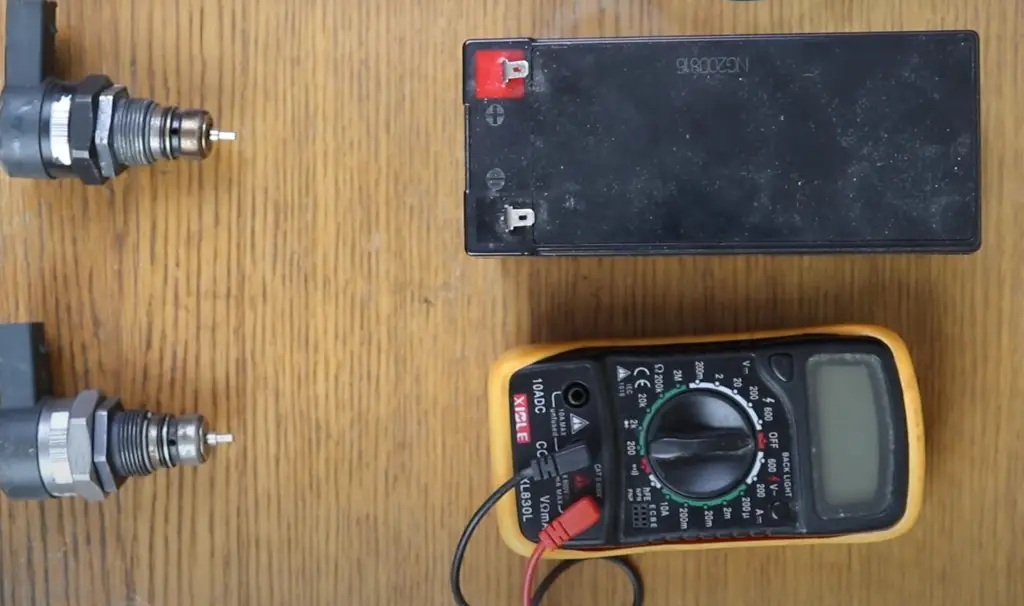
What Can Cause A Fuel Rail Pressure Sensor To Fail?
Various causes, such as improper installation and electrical issues, may result in the malfunctioning of a fuel rail pressure sensor. If the connection between the fuel rail and the sensor is loose or damaged, it can cause a signal failure.
Additionally, if the wiring harness or connectors become corroded, shorted or broken, this can affect the accuracy of the reading. In certain scenarios, an inadequate voltage provided to the fuel rail pressure sensor can lead to its failure.
Lastly, if dirt particles find their way into the housing of the sensor itself either during installation or from contaminated fuel lines, this may cause premature failure of the device as well. [1]
Signs And Symptoms Of A Faulty Fuel Rail Pressure Sensor
If your vehicle is suffering from a faulty fuel rail pressure sensor, you may notice some tell-tale signs.
First, the engine’s performance can suffer. This includes power loss and sluggish acceleration. The check engine light may also be triggered by a fault in the wiring of the fuel rail pressure sensor.
Additionally, you may notice higher-than-normal exhaust smoke or an unusually loud exhaust sound coming from your vehicle. An incorrect fuel mixture or a rich mixture can lead to these issues as well as reduce the life of your catalytic converter and spark plugs.
Inaccurate fuel rail pressure sensor readings can result in reduced gas mileage, as it hinders the amount of fuel that is injected into your engine’s combustion chamber.
Ultimately, a malfunctioning fuel rail pressure sensor can cause plenty of issues that can not only affect your vehicle’s performance but also reduce its lifespan. To properly diagnose any issue with the fuel rail pressure sensor, it is essential to use a multimeter for testing. This will help you identify the issue quickly and take the necessary steps to fix it before any major damages are caused. [2]
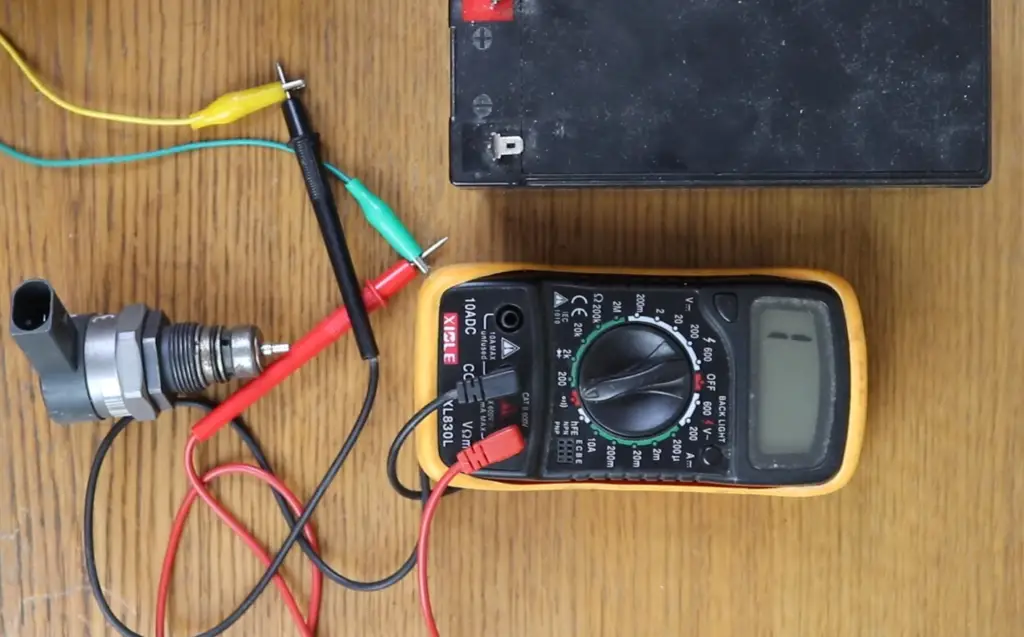
How To Test The Fuel Rail Pressure Sensor With A Multimeter?
The fuel rail pressure sensor (FRPS) is an important component in the fuel injection system of a vehicle. It measures the pressure of the fuel in the rail and sends this information to your car’s computer. If it fails, you can experience reduced engine performance or even a complete stall. Here, we will discuss how to test a FRPS with a multimeter.
First, you need to locate the FRPS; it is usually located near where the fuel injectors connect to the fuel rail. Make sure that your engine is off and disconnect its battery for safety reasons before performing any work on it. Once these steps are taken, you can start testing by connecting one lead from your multimeter to each terminal on the FRPS.
Next, set your multimeter to measure voltage and turn the key to the “on” position. Monitor the readings on the multimeter display; you should see one reading of approximately 5 volts. If it doesn’t show any reading or shows a different one, then your FRPS is not functioning correctly and needs replacement.
Finally, switch off the engine and disconnect all cables from the fuel rail pressure sensor before returning them back into their original positions before testing.
By following these simple steps, you can easily test a fuel rail pressure sensor with a multimeter. It is important to remember that if the readings do not meet the standard 5 volts, then you need to replace your FRPS. This can help you to maintain a healthy and well-functioning engine.
How To Replace A Fuel Rail Pressure Sensor If Necessary?
After testing the fuel rail pressure sensor with a multimeter and determining that it is not working properly, you may need to replace it. Replacing the fuel rail pressure sensor can be done in a few simple steps:
- Disconnect the negative battery cable from the vehicle’s battery. This will ensure safety while performing any electrical work on the engine.
- Locate the fuel rail pressure sensor at the end of the fuel rail near the injectors. It should be connected via two vacuum lines and one electrical connector.
- Remove both vacuum lines from the fuel rail pressure sensor using pliers or an appropriate tool for removal. Carefully also remove and disconnect its electrical connector from its socket on the fuel rail pressure sensor.
- Install the new fuel rail pressure sensor in the same position as the old one and reconnect both vacuum lines and its electrical connector back into their sockets.
- Re-connect the negative battery cable to its original connection on the vehicle’s battery.
After replacing your Fuel Rail Pressure Sensor, you may need to reset the ECU or on board computer of your car so that it can adjust itself with the changes in pressure settings caused by installing a new fuel rail pressure sensor. To do this, turn off your engine and disconnect both positive and negative terminals of your car’s battery for approximately 15 minutes before re-connecting them again. This will reset all of your car’s settings and allow your engine to adjust itself with the new fuel rail pressure sensor.
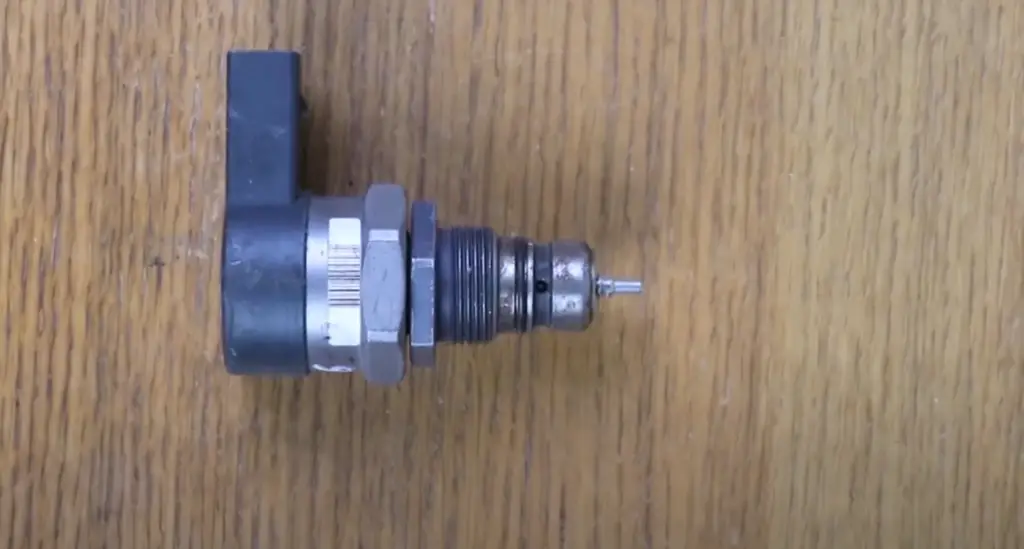
Once re-connected, start your engine and check if the issue has been resolved by running a series of tests with a multimeter to ensure that the fuel rail pressure sensor is working properly. After ensuring everything is in proper working order, you can now enjoy smooth driving conditions with your new fuel rail pressure sensor. [3]
Tips For Maintaining Your Car’s Engine Efficiency
In order to keep your car running at its optimal level, it’s important that you frequently check your fuel rail pressure sensor with a multimeter. This will help you ensure that the engine is running efficiently and smoothly, as well as preventing any costly repairs in the future. Here are some tips for ensuring the best performance from your vehicle:
- Make sure to regularly inspect all major components of your engine including the fuel rail pressure sensor and other related parts. Pay special attention to signs of wear or damage. If something looks off, be sure to replace it right away before further issues arise.
- Check the fuel pump and filter too. Make sure they’re clean and free of any debris or buildup. This will help promote good fuel flow and efficient pressure in the system.
- Change your engine oil regularly. A clean oil helps prevent sludge buildup and ensures optimal performance from your engine components, including the fuel rail pressure sensor.
- Don’t forget about regular tune-ups! Keep up with scheduled maintenance for your vehicle to ensure it runs as smoothly as possible for years to come.
By following these tips, you can rest assured that you are taking steps towards preserving the health of your car’s engine and its components such as the fuel rail pressure sensor. [4]
Can You Drive With A Faulty Fuel Rail Pressure Sensor?
No, it is not safe to drive with a faulty fuel rail pressure sensor. A fuel rail pressure sensor is an important part of the car’s fuel system, which helps monitor and maintain proper levels of fuel pressure in the engine. If the sensor malfunctions or fails, it can lead to reduced performance, increased emissions, and other problems such as stalling or misfiring.
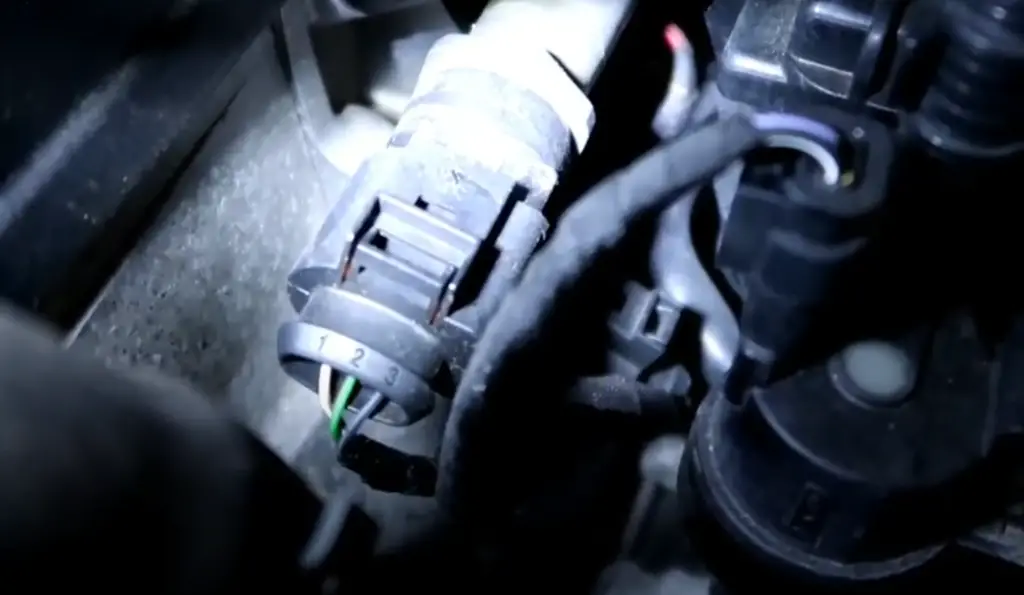
Additionally, a faulty fuel rail pressure sensor can cause the car’s computer to deactivate certain functions in order to avoid further damage. This means that your vehicle may not run at its full potential until the issue has been fixed.
Therefore, if you suspect there could be something wrong with your vehicle’s fuel rail pressure sensor, it’s best to have it checked out and replaced as soon as possible. A professional mechanic can easily diagnose the issue and determine what needs to be done to fix it.
In the meantime, you should try not to drive your car until the fuel rail pressure sensor has been repaired or replaced. Doing so could cause more serious issues and lead to costly repairs in the long run. It’s always better to be safe than sorry when it comes to car maintenance!
When Should A Fuel Rail Pressure Sensor Be Replaced?
A fuel rail pressure sensor should be replaced when it stops working properly or when it shows signs of physical damage. Signs that a fuel rail pressure sensor may need to be replaced include: erratic readings, low resistance readings, and/or failure to respond to changes in fuel pressure. In addition, if the wiring or connectors have sustained any physical damage, such as corrosion or water intrusion, then the sensor should be inspected for possible replacement. If the sensor continues to fail after inspection, then replacing the fuel rail pressure sensor is strongly recommended.
It’s also important to note that some engines use two separate sensors located in different areas of the engine for measuring overall system performance – one for high-pressure delivery and another for low-pressure return. If one of these sensors fails, then both should be replaced simultaneously to ensure proper operation and accuracy in the fuel delivery system. [5]
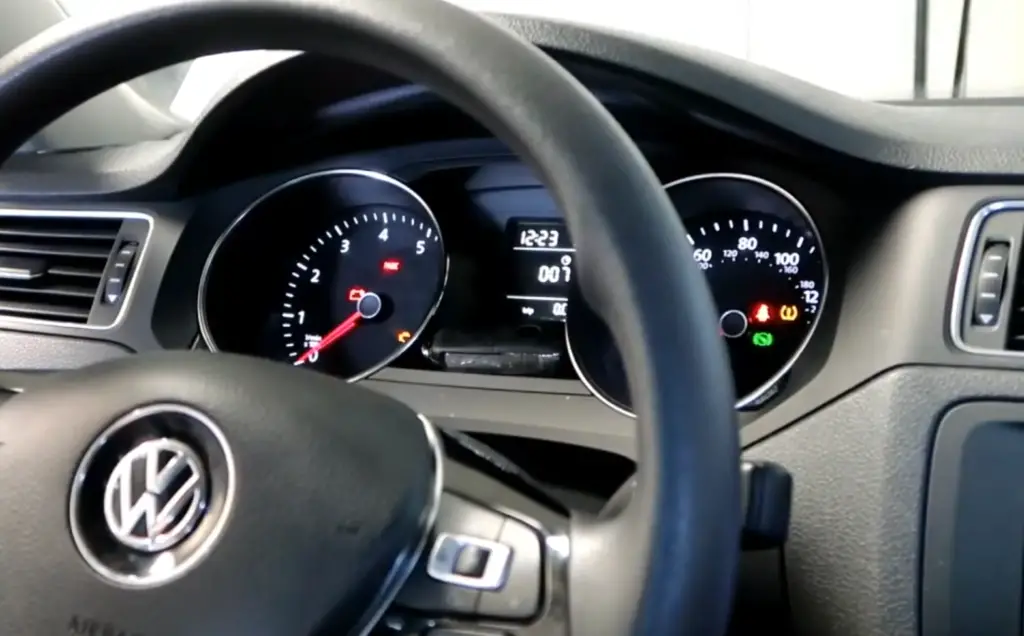
FAQ
How do you test a fuel rail pressure sensor with a multimeter?
The best way to test a fuel rail pressure sensor with a multimeter is by measuring its output voltage. First, turn off the engine and disconnect the connector from the fuel rail pressure sensor. Then connect your multimeter’s leads to the terminals on the sensor; one lead to ground and one lead to signal. Turn your multimeter on and set it to read in millivolts (mV). Start the engine and measure the voltage reading that appears on your multimeter. The results should be between 0.6 VDC and 3.2 VDC for proper operation of the sensor. If it reads outside this range, there may be an issue with faulty wiring or a defective sensor that needs replacing.
Are there any safety precautions I should take when testing a fuel rail pressure sensor?
Yes, it’s important to take safety precautions when testing a fuel rail pressure sensor. Make sure the vehicle is in a safe and well-ventilated area away from combustibles such as gasoline or solvent vapors. Also, never remove the fuel tank cap while the engine is running; this can cause an explosive pressure build-up that could result in serious injury. Finally, always make sure you disconnect the negative cable from the battery before working on any electrical components of your vehicle.
How often should I check my fuel rail pressure sensor?
It’s recommended to inspect and test your fuel rail pressure sensor at least once a year to ensure it is in proper working condition. If you notice any changes in your vehicle’s performance, it may be a good indication that the fuel rail pressure sensor needs to be checked immediately.
What are some common symptoms of a faulty fuel rail pressure sensor?
Some common symptoms of a faulty fuel rail pressure sensor include reduced engine power and efficiency, difficult starting, stalling or jerking during acceleration, poor fuel economy, and excessive exhaust smoke. If any of these symptoms occur, it’s important to have the fuel rail pressure sensor inspected and tested as soon as possible.
How many volts should the fuel rail pressure sensor have?
The fuel rail pressure sensor should have a voltage of between 0.2 to 4.5 volts when tested with a multimeter. If the voltage is outside this range, it could indicate a faulty fuel rail pressure sensor and requires further investigation.
What causes the fuel rail pressure sensor to fail?
The fuel rail pressure sensor can fail due to several reasons, such as a loose connection, debris buildup in the fuel lines, or faulty wiring. Additionally, extreme temperatures and vibrations can also lead to a faulty fuel rail pressure sensor.
How do you trick a fuel pressure sensor?
Fuel rail pressure sensors can be tricked by increasing the fuel pressure in the system. This is done by installing an adjustable fuel pressure regulator that can adjust the fuel delivery accordingly. If a higher fuel pressure is needed for better performance, then this might be an option worth considering. However, it’s important to note that tricking a fuel rail pressure sensor may void the vehicle’s warranty and could also lead to engine damage if not done properly. It’s also important to make sure all safety precautions have been observed when manipulating the fuel rail pressure sensor.
What controls the fuel rail pressure?
The fuel rail pressure is controlled by the fuel pump and the fuel pressure regulator. The fuel pump increases the pressure in the fuel lines, while the fuel pressure regulator maintains a specific degree of pressure in the rails. It’s important to note that when testing your Fuel Rail Pressure Sensor, you should always test with a multimeter first before replacing it. This will help ensure that your new sensor is compatible with your vehicle’s engine setup.
What happens when fuel rail pressure is too high?
If the fuel rail pressure is too high, it can cause a variety of issues, such as engine misfires, poor performance and reduced fuel economy. In some cases, the fuel may even back up into the intake manifold and cause an engine stall or similar issue.
Useful Video: Fuel Rail Pressure Sensor Diagnosis
Conclusion
After performing the steps to test a fuel rail pressure sensor with a multimeter, you should have some indication as to whether the sensor is functioning properly or not. If it does not show any signs of working correctly, then it may need to be replaced. It’s important to remember that any time you are dealing with fuel related components, take extra precautions and wear safety equipment such as gloves, goggles, and appropriate clothing. Finally, if in doubt about your abilities or what might work best for your car, make sure to check with a professional mechanic before attempting any repairs yourself.
Thank you for reading!
References
- https://kaiweets.com/blogs/news/how-to-test-fuel-rail-pressure-sensor-with-a-multimeter
- https://electrouniversity.com/how-to-test-fuel-rail-pressure-sensor-with-multimeter/
- https://mrfixitca.com/test-fuel-pressure-sensor-with-a-multimeter/
- https://eaglesgarage.com/how-to-test-a-fuel-pressure-sensor-with-a-multimeter/
- https://mystolenhome.com/how-to-test-fuel-rail-pressure-sensor-with-multimeter/





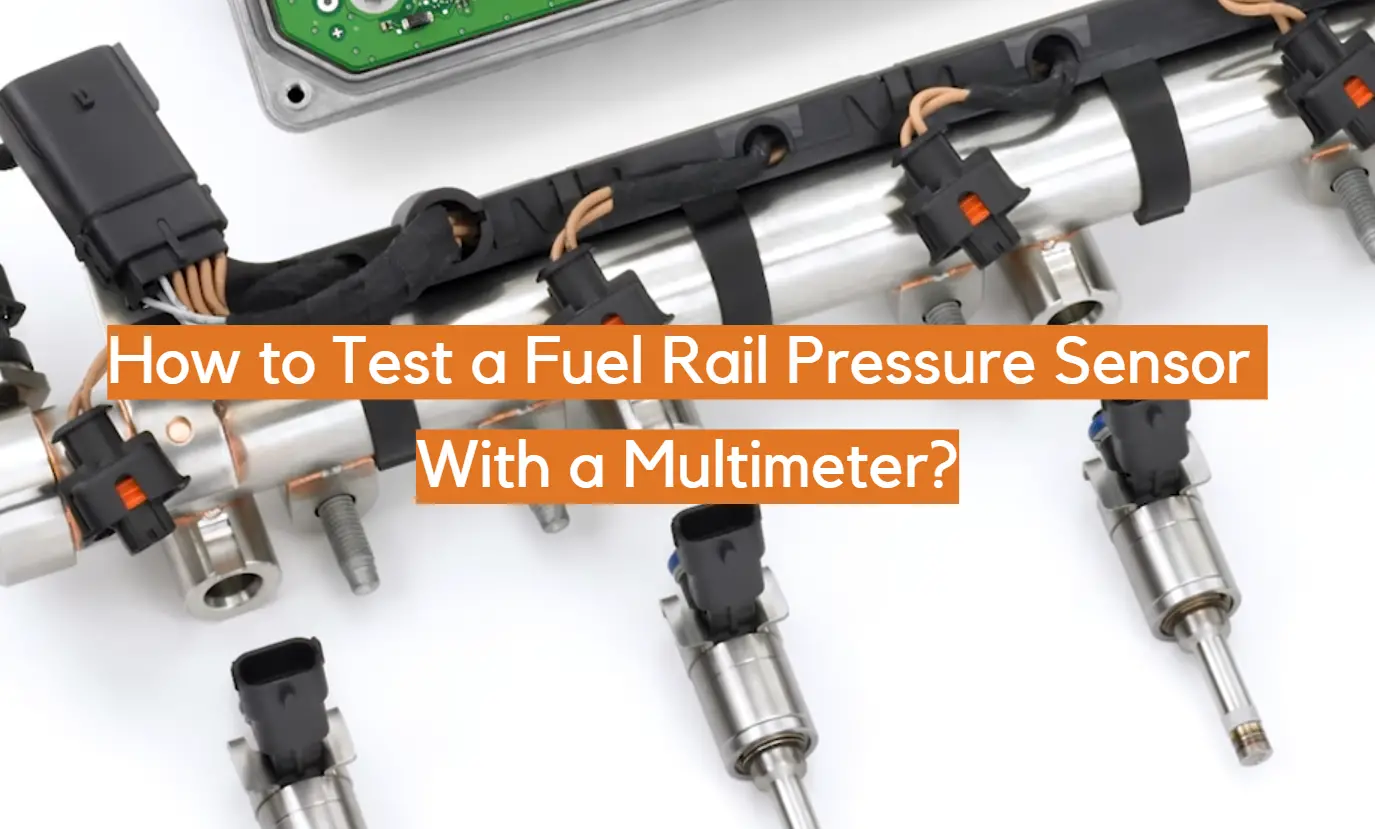






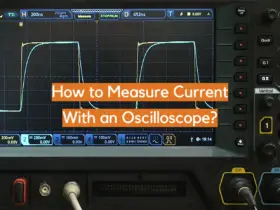

Leave a Reply